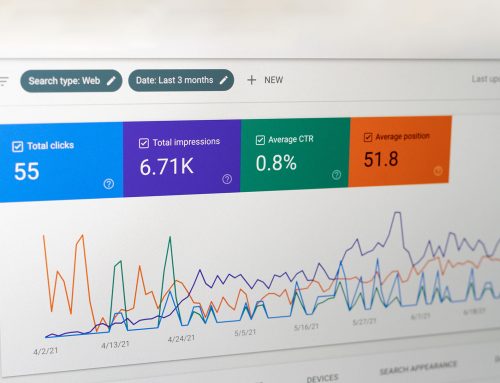In the ever-evolving landscape of digital marketing, staying ahead of the curve is imperative for businesses striving to connect with their audiences effectively. As we step into 2024, the digital marketing realm continues to witness dynamic shifts, spurred by technological advancements, changing consumer behaviours, and market dynamics. To thrive in this fast-paced environment, marketers must anticipate and embrace emerging trends to craft strategies that resonate with their target demographics. Here, we delve into the top five digital marketing trends poised to shape the marketing landscape in 2024, offering insights and actionable strategies for businesses to leverage these trends to their advantage.
Trend #1: The Rise of Podcasting: A Shift from Blogs to Audio Content
In recent years, podcasts have emerged as a powerful medium for both entertainment and information consumption. As we venture into 2024, a notable trend in the digital marketing landscape is the increasing preference for podcasts over traditional blogs. This shift underscores the evolving preferences of consumers, who seek more immersive and convenient ways to engage with content. In this trend analysis, we explore the reasons behind the growing popularity of podcasts among businesses and consumers alike, as well as strategies for leveraging this trend effectively.
- Changing Consumer Behaviour: One of the key drivers behind the rise of podcasts is the shifting preferences of consumers towards audio content. With the proliferation of smartphones and the ubiquity of audio streaming platforms, consumers are increasingly turning to podcasts as a convenient and accessible source of information and entertainment. Unlike blogs, which require visual attention and active reading, podcasts enable multitasking, allowing listeners to consume content while commuting, exercising, or performing other tasks.
- The Power of Authenticity and Connection: Podcasts offer a unique opportunity for businesses to establish authentic connections with their audiences. Unlike traditional advertising or sponsored content, podcasts allow brands to engage with listeners in a more conversational and intimate manner. By featuring industry experts, thought leaders, or company representatives as hosts or guests, businesses can humanise their brand and build trust with their target audience.
- Enhanced Brand Storytelling and Engagement: Podcasts offer businesses a dynamic platform for storytelling and brand narrative. Through engaging storytelling, insightful interviews, or educational content, brands can captivate listeners’ attention and convey their brand values, mission, and offerings in a compelling manner. By creating regular podcast episodes, businesses can cultivate a loyal audience base and foster ongoing engagement and brand advocacy.
Trend #2: Diversification of Social Media Strategy: Embracing Less Popular Platforms
In the ever-expanding realm of social media, businesses are continuously seeking innovative ways to reach and engage with their target audiences. As we move into 2024, a notable trend in digital marketing is the strategic allocation of resources towards less popular social media networks. While major platforms like Facebook, Instagram, and Twitter have long dominated the social media landscape, the emergence of niche and specialised platforms presents new opportunities for businesses to connect with specific demographics and communities. In this analysis, we explore the rationale behind this trend and provide insights into how businesses can capitalise on the potential of lesser-known social networks.
- Targeted Audience Segmentation: One of the primary motivations for businesses to explore less popular social networks is the ability to target niche audiences more effectively. Unlike mainstream platforms, which cater to broad demographics, specialised networks focus on specific interests, industries, or demographics. By identifying platforms that align with their target audience’s preferences and interests, businesses can enhance the relevance and effectiveness of their marketing efforts, leading to higher engagement and conversion rates.
- Reduced Competition and Noise: As major social media platforms become increasingly saturated with content and advertisements, standing out amidst the noise poses a significant challenge for businesses. In contrast, less popular social networks often offer lower competition levels, providing businesses with a unique opportunity to capture the attention of users more effectively. By allocating resources to platforms with fewer competing brands and advertisers, businesses can achieve greater visibility and engagement, thereby maximising the impact of their marketing campaigns.
- Emerging Trends and Innovations: By embracing less popular social networks, businesses gain early access to emerging trends, features, and innovations in the social media landscape. Niche platforms are often more agile and experimental, allowing businesses to explore new content formats, engagement strategies, and advertising options before they become mainstream. By staying ahead of the curve, businesses can position themselves as innovators within their industry and gain a competitive edge in reaching and engaging their target audience.
Trend #3: The Erosion of Marketing Moats: The Ascendancy of Branding
In the dynamic landscape of digital marketing, businesses have long relied on the concept of marketing moats—barriers to entry that protect their market share and competitive advantage. However, as we enter 2024, a notable trend is emerging: the diminishing significance of traditional marketing moats, with the exception of strong brand equity. In this analysis, we delve into the factors contributing to the erosion of marketing moats and highlight the enduring importance of brand building in an increasingly competitive marketplace.
- Fragmentation of Consumer Attention: With the proliferation of digital channels and the democratisation of content creation, consumer attention has become increasingly fragmented. Traditional marketing moats, such as exclusive distribution channels or proprietary technologies, are no longer as effective in capturing and retaining audience attention amidst a sea of competing content. In this fragmented landscape, businesses must prioritise brand building as a means to cut through the noise and establish a lasting connection with consumers.
- Rise of Agile and Disruptive Competitors: In today’s fast-paced business environment, the barriers to entry in many industries have diminished, allowing agile and disruptive competitors to enter the market and challenge established players. Technologies such as cloud computing, open-source software, and social media have democratised access to resources and distribution channels, levelling the playing field for new entrants. In this context, traditional marketing moats based on proprietary technologies or infrastructure offer limited protection against nimble competitors, highlighting the need for businesses to differentiate themselves through compelling brand narratives and experiences.
- Shift Towards Experience-Based Differentiation: As products and services become increasingly commoditised, businesses are recognising the importance of differentiation through customer experience. In a world where consumers have access to a plethora of options, the quality of interactions and the emotional connection they forge with brands often outweighs functional benefits alone. While marketing moats based on product features or pricing strategies may offer temporary advantages, sustainable differentiation lies in delivering exceptional experiences that resonate with consumers on a deeper level.
Trend #4: Evolving Content Composition: Adapting to New Writing Paradigms
As digital marketing continues to evolve, so too does the art of content creation. In 2024, a significant trend reshaping the digital landscape is the transformation of content writing methodologies. From search engine optimisation (SEO) to user experience (UX) considerations, businesses are rethinking their approach to content composition to meet the evolving needs and preferences of online audiences. This trend analysis explores the factors driving this shift and outlines strategies for adapting content writing practices to remain relevant in an ever-changing digital ecosystem.
- Human-Centric Content Creation: In the past, content writing often prioritised keywords and search engine rankings over user experience. However, with advancements in search algorithms and a growing emphasis on user satisfaction, businesses are pivoting towards a more human-centric approach to content creation. This involves crafting content that resonates with readers on a personal level, addresses their pain points, and delivers genuine value. By focusing on user intent and providing insightful, engaging content, businesses can foster deeper connections with their audience and enhance brand credibility.
- Interactive and Multimedia Content Formats: In an age of multimedia consumption, static text-based content alone may no longer suffice to capture audience attention. To remain competitive, businesses are diversifying their content formats to include interactive elements such as videos, infographics, quizzes, and polls. These dynamic formats not only enhance user engagement but also cater to different learning styles and preferences. By embracing multimedia content, businesses can create more immersive and memorable experiences for their audience, driving higher levels of interaction and brand recall.
- Conversational and Natural Language: With the rise of voice search and AI-powered virtual assistants, the way people search for information online is evolving. As a result, there is a growing demand for content that mirrors natural language patterns and conversational tone. Businesses are adapting their content writing strategies to incorporate long-tail keywords, question-based queries, and colloquial language to align with user search behaviour. By optimising content for conversational search, businesses can improve their visibility in voice search results and enhance the overall user experience.
Trend #5: Globalisation of Marketing: Beyond Regional Boundaries
In the interconnected digital age of 2024, the boundaries of traditional marketing regions are fading away, giving rise to a trend where businesses are expanding their focus beyond local or regional markets. This shift reflects the increasing globalisation of commerce and the opportunities presented by digital technologies to reach audiences worldwide. In this analysis, we explore the drivers behind this trend and strategies for businesses to effectively navigate the complexities of global marketing in the digital era.
- Accessibility of Global Audiences: With the widespread adoption of the internet and social media platforms, businesses now have unprecedented access to global audiences. Digital technologies have democratised access to information and enabled businesses of all sizes to reach consumers in distant markets with relative ease. As a result, businesses are increasingly recognising the potential for growth and expansion beyond their traditional geographic boundaries, leveraging digital channels to engage with diverse audiences across the globe.
- Economic Advantages of Scale: The globalisation of markets offers economic advantages for businesses seeking to scale their operations. By expanding their reach to multiple regions, businesses can capitalise on economies of scale, spreading fixed costs across a larger customer base and increasing their revenue potential. Furthermore, global marketing enables businesses to diversify their revenue streams and mitigate risks associated with market fluctuations or geopolitical instability in specific regions.
- Cultural Relevance and Localisation: While digital technologies facilitate global reach, successful marketing in diverse regions requires a nuanced understanding of local cultures, languages, and preferences. Businesses are investing in localisation strategies to adapt their marketing content and messaging to resonate with regional audiences. This may involve translating content into multiple languages, tailoring marketing campaigns to cultural norms and traditions, and collaborating with local influencers or partners to enhance brand authenticity and relevance.
In conclusion, the trends of 2024 highlight the need for businesses to embrace innovation, authenticity, and adaptability in their digital marketing strategies. By understanding and leveraging these trends, businesses are able to forge deeper connections with their audiences, differentiate themselves from competitors, and drive sustainable growth in an increasingly competitive and interconnected marketplace.


